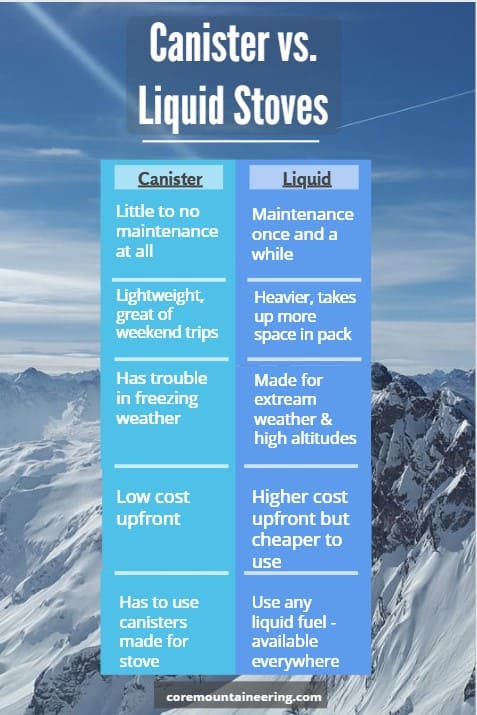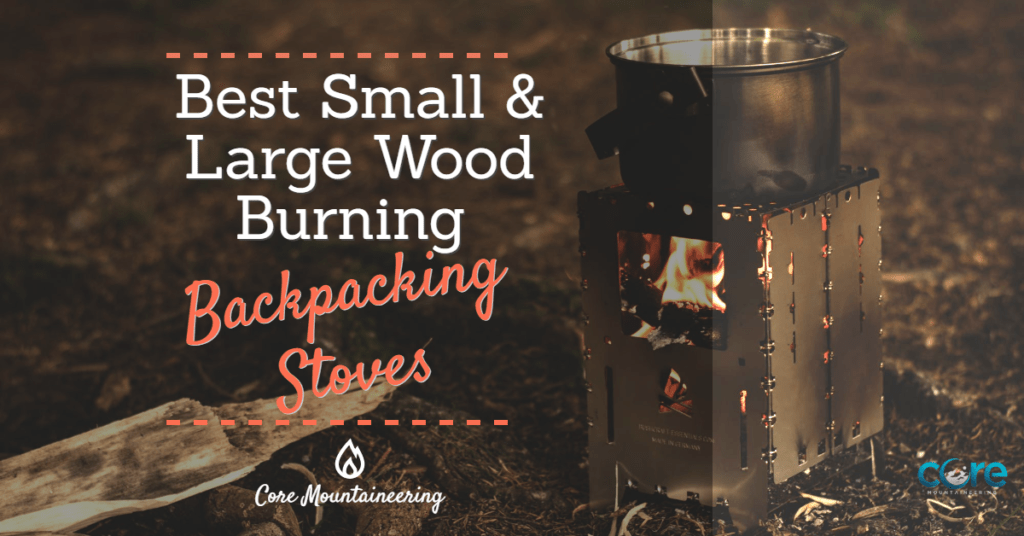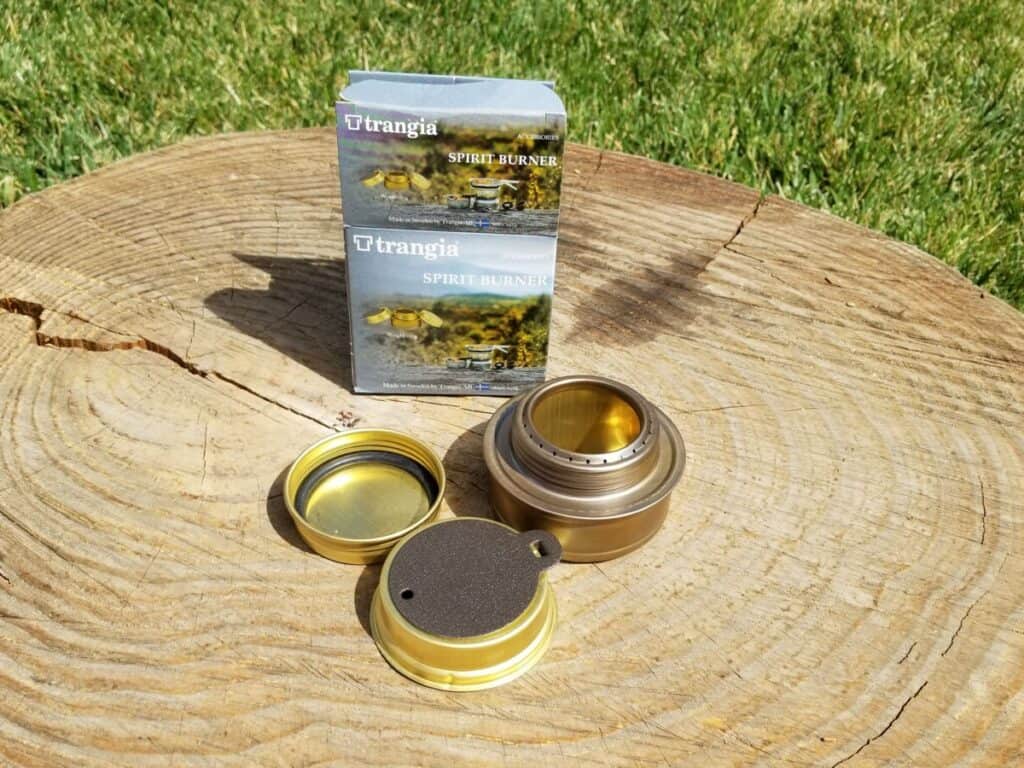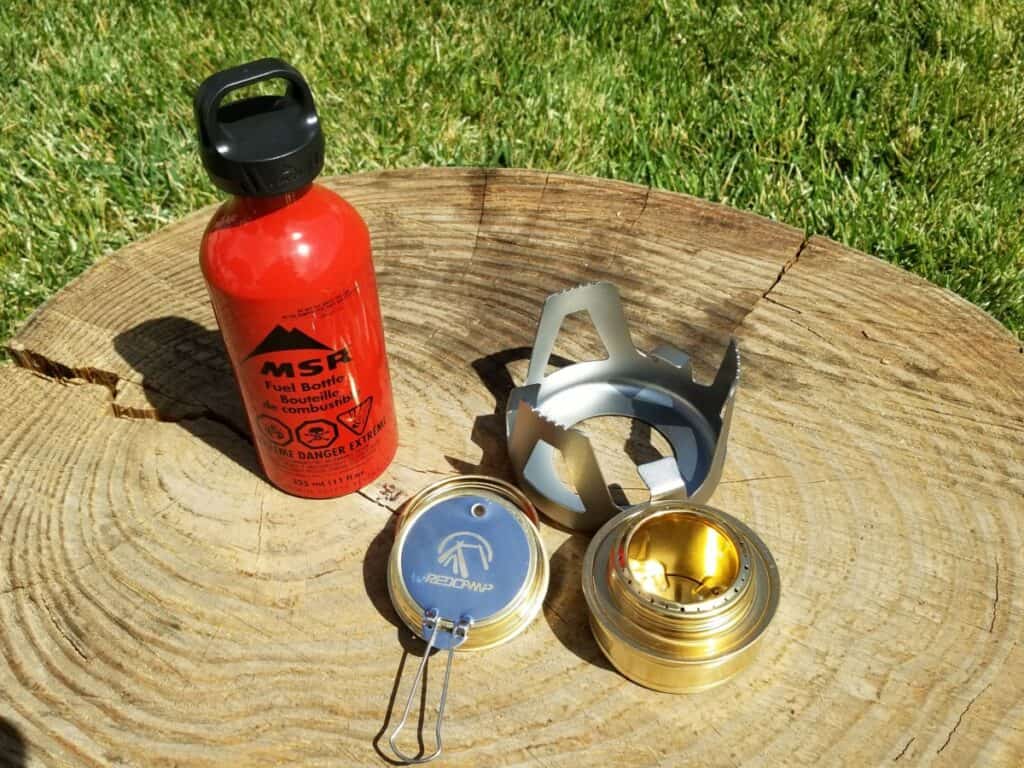If you’ve been exploring options for backpacking cooking gear, there’s no doubt you’ve heard people talking about alcohol stoves. There’s a definite reason they come so highly recommended.
Alcohol stoves are lightweight, mobile, and durable. They burn fuel that can be easily found anywhere globally, and their simple, dependable design lacks the moving parts found on most other camping stoves.
Their reliability has made them the go-to cooking option for backpackers, thru-hikers, and other minimalist campers.
There are, however, some other factors you’ll want to take into account when deciding if these stoves are right for you. We’ve dug into the details to help you understand their benefits and drawbacks.
If you decide they meet your camping needs, we’ve also included a buyer’s guide and recommendations for the best options on today’s market to make your purchasing decision easier.
What is an Alcohol Stove?

Alcohol stoves are small metal containers designed to hold alcohol-based fuel. When the fuel ignites, the canister produces a flame used for cooking and heating water. They’re often used as an alternative to gas and liquid canister stoves.
The stoves come in a variety of sizes, materials, and designs. Denatured alcohol, ethanol, methanol, or other forms of liquid alcohol work as fuel. The combination of these variables creates a flame of different shapes and intensities.
Alcohol stoves are lightweight, mobile solutions for cooking and heating.
This makes them a go-to choice for campers and hikers looking to reduce pack weight.
Alcohol Stove Pros
There are plenty of options out there when it comes to camping stoves. So, what makes alcohol stoves so popular with backpackers, thru-hikers, and other campers?
Let’s take a look at the factors that contribute to their excellent reputation.
Check out some of the other options for camping stoves in our article, Best Small & Large Wood Burning Backpacking Stoves.
Alcohol Fuel Is Accessible
You can find the fuel used by alcohol stoves at gas stations, hardware stores, supermarkets, and pretty much any all-purpose store. It’s also possible to burn multiple alcohol types, which increases the chances the store you wander into will have usable fuel.
By comparison, fuel canisters are more challenging to come to find.
Fuel canister stoves also require particular fuel types, which means if a store is out of stock, you’re out of luck.
Accessible fuel may not be a concern if you only plan to use the stove on shorter trips in familiar locations. However, if you’re thru-hiking or camping in unfamiliar areas, knowing you can find fuel at the nearest gas station provides profound peace of mind.
Fuel Is Cheap
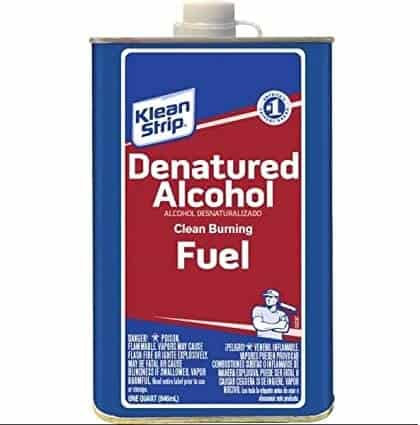
Not only is the fuel easy to find, but it’s also very inexpensive. Denatured alcohol is one of the most common types of fuel and costs around $6-8 per quart. Other usable fuels such as ethanol and methanol also cost about the same.
Less Fuel Waste
One issue people have with fuel canister stoves is that you end up with a bunch of partially full canisters that end up going to waste.
Say you go for a weekend trip and use a single canister a few times each day for short-duration cooking. By the end of the hiking trip, your canister isn’t empty, but it’s definitely not full anymore. If you don’t have a pressure gauge, it’s tough to estimate how much fuel is left.
CoreM Pro Tip: If you’d like to see how long canister fuel lasts per grams check out our article here, Backpacking Fuel Types – Beginners Guide.
Now let’s say you decide to go on another two-day trip the following weekend. When you’re packing for this upcoming trip, you’ll find yourself in a predicament.
You’re not sure how much fuel is in the used canister. So, if you only pack that one, you risk running out.
That leaves you with two other options. Either bring the used canister and a new one which would increase pack weight. Or, bring one new canister to guarantee you have enough fuel and keep pack weight at a minimum.
No matter which option you choose, there will be a considerable downside.
Alternatively, the liquid fuel used for alcohol stoves is stored in a refillable bottle. This allows you to take fuel out with you on that first trip and then refill the same bottle for your next trip. This means no unnecessary weight or wasted fuel.
Alcohol Stove Are Lightweight
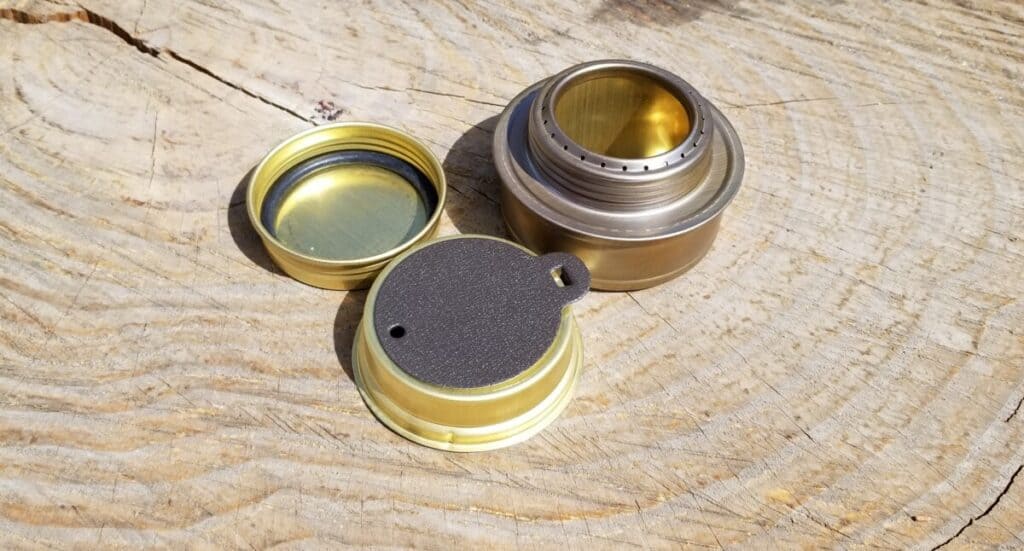
Backpackers are always looking to reduce pack weight. Optimizing cooking gear is one of the best ways to help keep that weight down. Depending on your needs and carrying capabilities, camping stoves range from a few ounces to a few pounds.
Alcohol stoves fall on the lowest end of this weight spectrum.
Weighing anywhere from 1 to 5 ounces, they’re the lightest weight cooking stove available. For hardcore minimalists, packing one stove adds hardly any weight to your setup. For those who value a lightweight pack but aren’t counting ounces, you can load a few without significantly increasing pack weight.
Reliable
Reliability is arguably the most crucial feature for any backpacking stove. It doesn’t matter if you’re a thru-hiker, day tripper, featherweight minimalist, or proud pack mule–if your stove breaks, it’s useless.
Alcohol stoves are incredibly simple. They’re not much more than a metal container with some holes. Unlike canister stoves, they don’t have hoses, valves, seals, or other moving parts that are vulnerable to breaking.
They require no ongoing maintenance, and unless you crush it, you can depend on it to work for years.
This is especially important for thru-hikers or any camper who depends on their stoves for survival. It’s one thing if your stove breaks and you can’t have your mid-hike cup of tea. It’s a whole different, potentially disastrous, story when you’re a few days hike from civilization and can’t cook the food you packed.
That said, it doesn’t matter whether you’re a day-tripper or long-distance trekker–everyone appreciates durable, reliable gear.
Alcohol Stove Cons

Now that we’ve covered the factors that make alcohol stoves desirable let’s look at some of the drawbacks.
Burn at a Lower Heat
The flame produced by an alcohol stove is not as hot as the flame of a canister stove. It takes double the amount of time to boil water, which means you should expect longer overall cook times.
This may not be an issue for solo campers with low intensive cooking/boiling needs. However, if you’re cooking for multiple people or preparing foods with longer cook times, it could be a problem.
It’s also worth mentioning that because an alcohol stove’s flame is weaker, it’s often more challenging to see.
This could create a dangerous situation if you attempt to refill the stove under the impression that the flame went out. Also, although it’s unlikely, it’s possible for a fellow camper who doesn’t realize there is an open flame to knock the stove over and cause a fire.
Limited Temperature Control
Unlike canister stoves, which have an adjustable pressure system to control their flame, the intensity of the flame produced by an alcohol stove cannot be adjusted in the same way.
Most alcohol stoves have no means of regulation. The ones that do only have an adjustable lid that controls exposure to the flame. Although these lids provide some degree of control over the flame, it’s not as efficient as the temperature control of a canister stove.
It Can Be a Problem in Windy Conditions

The lack of a pressurized flame not only prevents the flame from being adjusted. It also makes the flame of an alcohol stove far more vulnerable to wind than a canister stove’s flame.
Picture the difference between a torch lighter and a regular lighter. The torch easily withstands wind, while even a light breeze puts out the standard lighter.
When fuel shoots out under pressure, it increases the flame’s ability to withstand wind. The same principle is true with alcohol vs. canister stoves. The only exception is if you choose to use a more complex pressure flame alcohol stove.
When using an alcohol stove in even light winds, you’ll need to set up an effective wind blocker. In heavy wind conditions, these stoves can become incredibly difficult to use.
Fuel Amount Has a Learning Curve
You should expect that whatever fuel you pour into an alcohol stove will be burned once you light it up. When you first start using these stoves, you’ll find some trial and error when deciding the amount of fuel to fill up for specific cooking needs.
You’ll want to experiment with this a bit. First, figure out how long exact measurements of the fuel burn. Then, find out how long it takes to cook certain foods or boil specific amounts of water. You’ll get it dialed in after a while, but in the beginning, you should expect both wasted fuel and refill breaks.
Fuel Can Be Messy and Smelly
It’s worth keeping in mind any type of liquid alcohol could cause a big problem if there’s a leak. Compared with a fuel canister, there’s a greater chance the bottle used to store the alcohol will leak. If it does, everything in your pack will smell like alcohol.
Even if there isn’t a significant leak, there’s a good chance alcohol residue will be on the stove and the outside of the bottle, so you’ll need to take extra precautions when packing them.
Fuel Weight May Not Be Efficient for Your Needs
Although the weight of the alcohol stove itself is lighter than all other options on the table, when you take the weight of the fuel and your intended use into the equation, it becomes a trickier decision.
A bottle of alcohol weighs more than most individual gas canisters. So, if you never use more than one gas canister per trip, speaking strictly in terms of fuel weight, you’re better off with a canister.
However, once you start to carry multiple canisters, the single bottle of alcohol will weigh less. This means, in terms of pack weight for thru-hikers or any campers requiring an excess of fuel, you’ll be better off carrying a bottle of alcohol than multiple canisters.
Alcohol Stove Designs
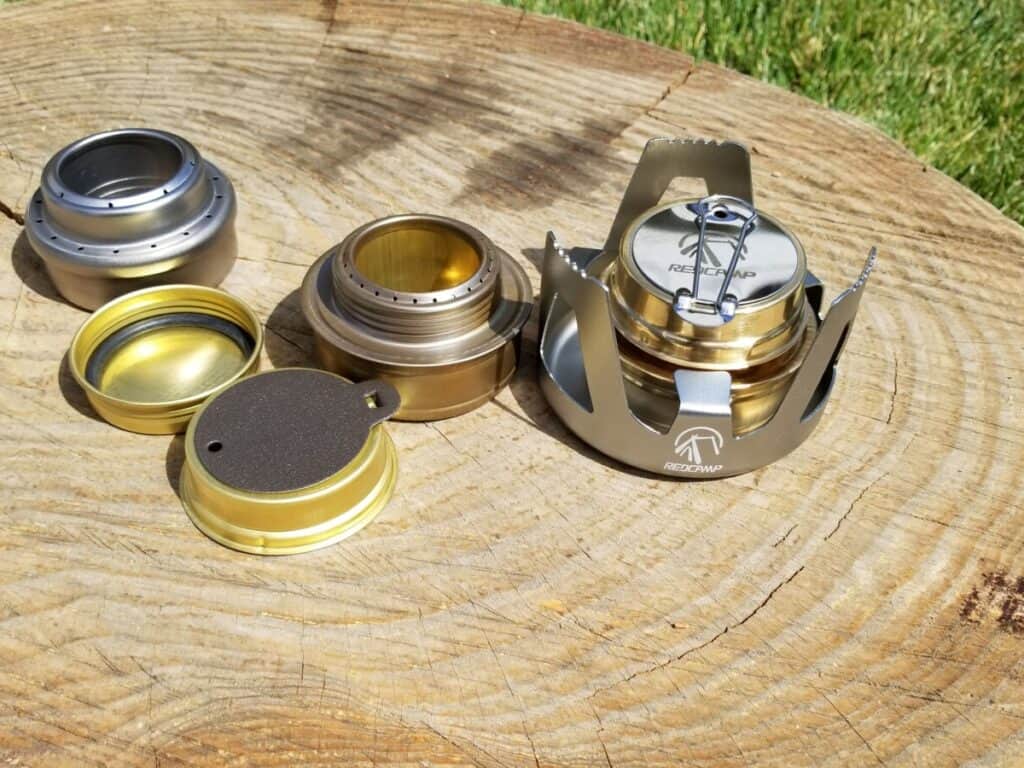
Open Flame
This is the simplest of all the alcohol stove designs. It’s essentially a metal container that is completely open around the top (picture a tuna can with the lid completely removed). The fuel is poured directly into the container and then lit.
In order to cook with an open flame stove, you’ll need a metal cooking stand that holds the pot, pan, or kettle above the flame.
Vertical Flame
Unlike the open flame, the vertical flame is mostly enclosed at the top, except for a chimney that extends from the middle. This chimney concentrates the flame through a smaller hole, which increases the strength of that individual flame.
Like the open flame, you’ll also need a metal pot/pan stand to cook with this stove.
Side Flame
The side flame alcohol stove uses a metal can that is fully enclosed at the top but has small holes cut around the top section of its side. The individual flames combine to create a larger flame that covers the entire circumference of the can.
Unlike the open and vertical flame, a pot or pan can be placed directly on top of the can, eliminating the need for a metal cooking stand.
Pressure Flame
This is the most complicated of the alcohol stove designs. The fuel inside the can is heated until the vapor has been pressurized. This means you’ll need a primary heat source to use this type of stove. Once heated, the pressurized vapor is released and ignited, pushing a flame through a single hole at the top (like a vertical flame) or multiple holes around the side (like a side flame).
The pressure flame stove burns hotter than any other type of alcohol stove and has the greatest wind resistance. Like the side flame, it also doesn’t require a metal cooking stand.
Types of Alcohol Fuel
- Denatured Alcohol
- Tenol
- Ethanol
- Methanol
- 99% Isopropyl Alcohol
Top 3 Alcohol Backpacking Stoves
We’ve researched the options and have found the three best alcohol backpacking stoves on the market for any budget.
Trangia Spirit Burner– Budget Friendly
The Trangia Spirit Burner is a high-quality, budget option. Its simple design and brass construction make it a durable burner that won’t break the bank. It weighs 2.88 ounces, and although there are lighter options out there, it provides an outstanding balance between weight, strength, and cost.
What we also really love about this little stove is the O-ring lined screw cap, which allows you to store unused fuel within the burner securely. It’s a small feature but one that saves you some time and hassle with the packing and filling process.
Keep in mind that Trangia only includes the burner with this stove. That means you’ll need to buy a cooking stand separately to balance your pot, pan, or kettle.
You can see the current price of the Tragia Spirit here.
REDCAMP Mini Alcohol Stove – Built-in Stand
Similar to the Trangia, the RedCamp alcohol stove is made primarily of durable brass and is only slightly more expensive. The RedCamp, however, includes a few extra features that the other stoves on this list don’t.
This stove comes with a built-in aluminum stand. Although this adds some extra weight to the burner, you’re ready to cook right out of the box. Plus, since aluminum is incredibly lightweight, the whole rig only weighs 4.96 ounces.
The RedCamp also features an adjustable cover that allows you to control temperature and extinguish the flame. For anyone who likes a “simmer” option while cooking, this feature makes the RedCamp stove a solid choice.
Check out the current price of the RedCamp alcohol stove here.
EVERNEW Titanium Alcohol Stove -The Strongest and Lightest
The Evernew stove is hands down one of the toughest alcohol stoves on the market. The titanium construction is not only more robust than the brass used for the first two stoves on this list, but it’s also lighter. The burner weighs a mere 1.6 ounces–more than an ounce less than the Trangia.
The cost of this increased strength and reduced weight is pretty significant. The Evernew costs more than double the price of the other two stoves. Maybe not the best starter option, but for the experienced trekker looking for a top-of-the-line product, you’ll get what you pay for.
You can see from the picture above with me holding the stove it’s a small stove. It was notably lighter than the other two stoves I have as well.
Something to consider when it comes to the Evernew is that it has a reputation as a “fuel hog.” Though it indeed burns fuel at a faster rate than some other alcohol stoves, it also heats up faster and burns more intensely.
Anyone looking for a long, slow burn might consider this a downside. For those who prefer more heat and power in their flame, this is the burner for you.
Keep in mind that, like the Trangia, you’ll need to purchase a cooking stand separately.
You can see the current price of the Evernew stove here.
Alcohol Fuel Bottle
I’m holding the 11-ounce fuel bottle size. MSR also has two other options, 20-ounces, and 30-ounces.
Another consideration when you decide if you’re going to be using these alcohol backing stoves is a bottle to carry in your pack. You can see that I have an MSR Liquide Fuel Bottle that I bought off of Amazon but this isn’t necessary if you don’t require a metal fuel container.
The reason I went with this fuel container is that the last thing I want is to get crushed inside my hiking backpack, leaking fuel on all my hiking gear. If you don’t pack your backpack so tight a plastic fuel container will do the job.
The Vargo Alcohol Fuel Bottle available on Amazon will work just as well as long as you’re not worried about it breaking.
This bottle is only a few dollars but there are many other bottles available. If you look around you might already have something laying around that can carry fuel.
Wrapping Up
As you can tell I’m a huge fan of alcohol stoves for all the benefits we talked about. I still use a mix of different stoves depending on where I’m going to hike and how long I’ll be gone.
Overall, these lightweight backpacking stoves are hard to beat!


